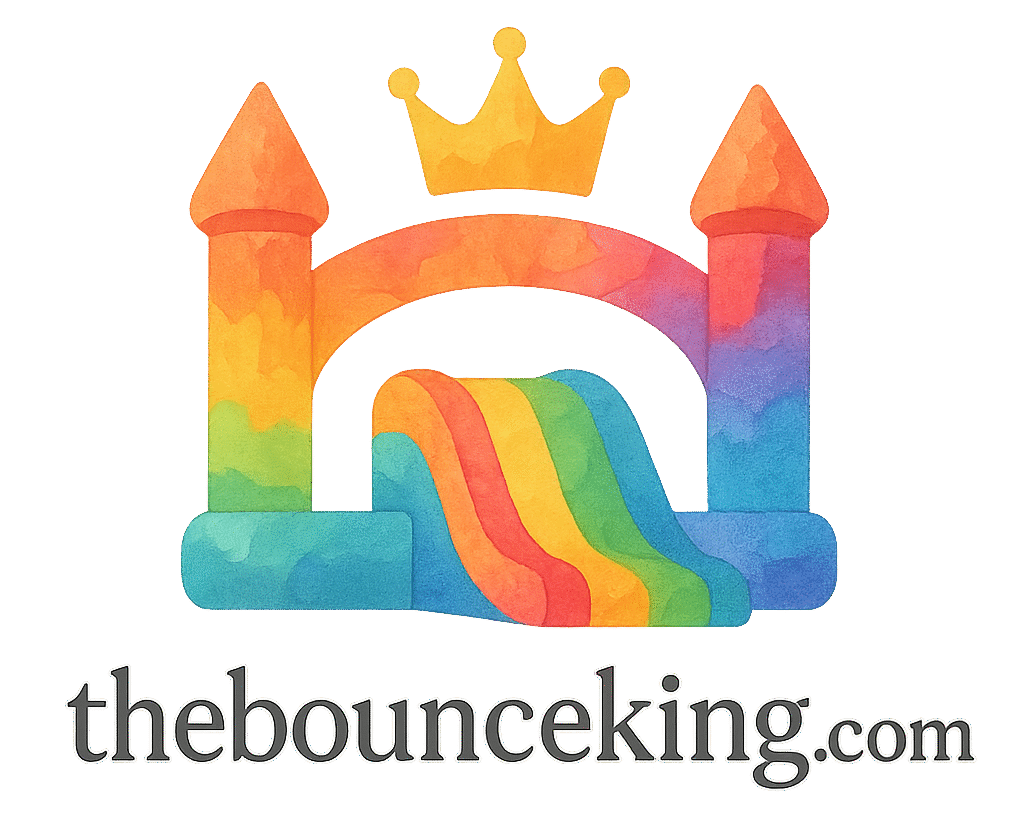Introduction: Why Bounce House Safety Matters
Bounce houses are an essential part of many kids’ parties, school events, and community gatherings. They bring loads of joy, excitement, and physical activity for children. However, just like any other inflatable equipment, safety is a key factor when setting them up. A bounce house can be a source of great fun but can also pose risks if not set up properly.
Ensuring that a bounce house is set up safely should be a top priority for parents and event organizers. When everything is done correctly, you can avoid injuries and ensure a worry-free experience. This article will go over 8 signs a bounce house is set up safely, helping you spot potential issues and ensuring the fun stays safe.
Sign #1: Proper Anchor System and Secure Placement
The first and most important sign that a bounce house is set up safely is its anchor system. A bounce house that’s not anchored properly can easily be blown away by wind or shift during use, creating a dangerous situation.
Checking the Anchor Points
The bounce house should be secured with heavy-duty stakes at all four corners. These stakes should go deep into the ground to prevent the structure from moving. It’s important to ensure that the anchors are strong enough to withstand the number of kids bouncing.
Understanding the Ground Conditions
Before setting up a bounce house, make sure the ground is stable. Soft or uneven terrain can make it difficult to secure the anchors properly. A flat, grassy area is ideal for setup. To learn more about safe setups, check out Bounce Safety Tips.
Sign #2: Clear of Obstacles and Hazards
The next safety check involves inspecting the surrounding area for any obstacles or hazards that could lead to accidents. Kids are often too focused on having fun to notice dangers around them, which is why it’s essential for adults to do this check.
Inspecting the Surrounding Area
Look for objects like sharp rocks, sticks, or low-hanging tree branches that could hurt the kids. A clean and clear area free of obstructions is vital for safe play.
Setting Up in Safe, Open Spaces
Setting up the bounce house in an open, spacious area is crucial. Avoid areas near fences or walls. A large open field is the best choice, providing ample room for both the bounce house and children. For tips on selecting the right venue, check out Bounce Themes for event planning.
Sign #3: Fully Inflated and Stable Structure
Before allowing any kids to enter, ensure that the bounce house is fully inflated. A partially inflated bounce house could collapse unexpectedly, causing injuries.
Ensuring the Bounce House is Completely Inflated
The bounce house should feel firm and stable. If it’s sagging or unevenly inflated, it’s a sign that the setup isn’t complete. Always check the air pressure and inflation levels.
Stability Checks During Use
Even after inflating the bounce house, continue to monitor its stability throughout use. If it begins to shift or sag, stop the activity immediately. For more tips on maintaining bounce house stability, visit Indoor Bounce Fun.
Sign #4: Age-Appropriate Setup
Not all bounce houses are created equal, and some are better suited for certain age groups. The size and design of the bounce house should match the ages and sizes of the children using it.
Choosing the Right Bounce House for the Right Age
Many bounce houses are designed for specific age groups. Be sure to choose the right one for your event to avoid accidents. A bounce house for older kids may be too large or bouncy for younger children, creating a risk.
Monitoring Age Groups During Use
It’s essential to divide kids into age-appropriate groups when possible. Overcrowding or mixing children of different ages can lead to injuries. For tips on creating safe bounce experiences, check out Bounce Rental.

Sign #5: Safety Netting and Protective Barriers
Safety netting and protective barriers are critical features that help prevent accidents, ensuring kids stay safely inside the bounce house while playing.
Checking Netting and Zippers
Before use, check that the netting is intact with no tears or holes. Zippers should be securely closed to prevent kids from slipping out of the bounce house.
Importance of Protective Barriers
Some bounce houses also feature protective barriers around the entrance or exit areas. These barriers prevent children from tumbling out, especially when jumping at high speeds. Learn more about protective setups with Bounce Safety Tips.
Sign #6: Adequate Supervision and Staff
Bounce houses are best enjoyed when there’s proper supervision. Having a trained adult or staff member to monitor children ensures that they follow safety guidelines and aren’t engaging in dangerous behavior.
How Supervision Reduces Accidents
Supervision helps prevent roughhousing, overcrowding, and other unsafe activities that could lead to injury. It’s also essential for maintaining order and ensuring kids take turns appropriately. For more on how to ensure safety at your event, visit Business Ideas for event management tips.
Training for Supervisors
The person overseeing the bounce house should know the safety protocols, including what to do in an emergency and how to handle any safety risks. Adequate training and preparation are key to preventing injuries.
Sign #7: Weather Considerations
Weather can make or break a bounce house experience. Extreme conditions like high winds, rain, or scorching heat can make it unsafe to use an inflatable bounce house.
Checking Weather Conditions
Before setting up the bounce house, always check the weather forecast. Strong winds or unexpected rainstorms could cause a bounce house to deflate or even blow away.
Taking Action During Adverse Weather
If weather conditions worsen, deflate the bounce house immediately and move it to a safe location. For more on handling outdoor bounce houses, check out Seasonal Bounce Events for tips on managing equipment in different weather conditions.
Sign #8: Emergency Safety Plan in Place
Finally, it’s essential to have an emergency safety plan in place. Even with the best safety precautions, accidents can still happen, so being prepared is crucial.
Preparing for Emergencies
Know where your first aid kit is, and make sure everyone is aware of emergency procedures. Quick access to help can make a difference in case of an injury.
The Role of Emergency Safety Plans
An emergency plan includes having designated staff trained in first aid and CPR, knowing how to evacuate children from the bounce house quickly, and contacting emergency services if necessary. Learn more about Bounce Business Rentals for tips on creating a comprehensive safety plan.
Conclusion: Keeping Your Bounce House Safe
By following these 8 signs a bounce house is set up safely, you can ensure that the kids at your event will have a blast without worrying about their safety. Always prioritize safety during setup and use, and keep monitoring the bounce house throughout the event. With these simple checks in place, you’ll be able to provide a fun, safe experience for everyone involved.
FAQs About Bounce House Safety
- What is the best surface for setting up a bounce house?
The best surface is flat, soft grass. Avoid using hard surfaces like concrete. For more details, check out Indoor Bounce Fun. - Can I use a bounce house indoors?
Yes, but ensure the space is large enough and free from obstacles. For setup ideas, visit Bounce Themes. - How can I ensure the bounce house stays secure during strong winds?
Make sure the bounce house is properly anchored, and always monitor weather conditions. Bounce Safety Tips provide further guidelines. - What age group is safe for using a bounce house?
Always check the manufacturer’s age recommendations. For more on appropriate bounce houses, visit Bounce Rentals. - What should I do if the bounce house begins to deflate?
Stop all use immediately and contact the rental company for assistance. - Do I need to supervise kids while they use the bounce house?
Yes, constant supervision is crucial. For supervision tips, check out Bounce Safety Tips. - What’s the best way to prepare for an emergency in a bounce house?
Have an emergency plan, know the location of first aid kits, and ensure your staff is trained. Learn more at Bounce Business Rentals.


